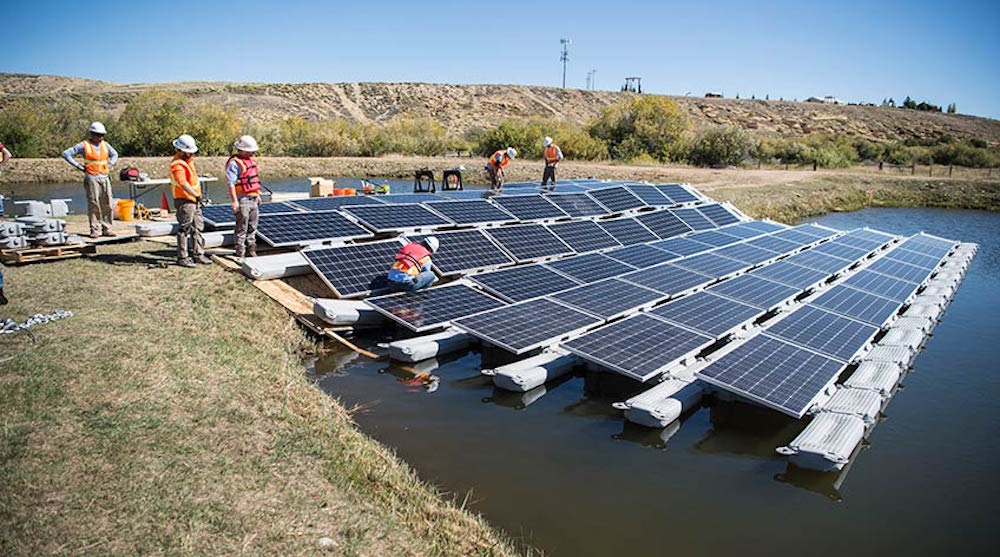
[Image above] A floating photovoltaic system being installed in Walden, Colorado. A new National Renewable Energy Laboratory study outlines benefits of these systems over land-based solar panels. Credit: Dennis Schroeder, NREL
If there is one thing action movies and rom-coms share in common, it is that eventually someone is going to be climbing around on a roof, be that on a mission to steal classified information or to woo a lover’s heart. But secret agents and moonstruck beaus may soon need a different way to sneak into forbidden territory—if the new precedent set in California becomes a nationwide standard.
The California Building Standards Commission recently upheld a decision to require solar panels on all new homes up to three stories high, effective Jan. 1, 2020. (Sorry, future teenagers—no stargazing from the roof for you.)
In the long term, homeowners are expected to benefit, but the new requirement could significantly increase upfront costs. And if homeowners try to avoid upfront costs by having third parties own the solar panels instead, that option could result in decades-long contracts that bring more expense (and headaches) down the road.
The idea of increasing investment in solar panels is a noble one, but placing the burden of uptake on homeowners may not be the best approach. In fact, placing solar panels on land at all may face opposition from citizens concerned about panels taking up valuable agriculture land, contaminating the environment, or even damaging community aesthetics.
If we want to embrace solar—but “not-in-my-backyard”—where else could we install panels that does not place undue burdens on homeowners or take up valuable agricultural land? According to scientists at the National Renewable Energy Laboratory (NREL), it might be time to consider moving from rooftops and instead installing on reservoirs.
“Floatovoltaics,” or floating photovoltaic (PV) panels, are traditional PV panels installed on manmade reservoirs rather than on land. The concept was first demonstrated more than 10 years ago when a large-scale floatovoltaic system was installed at a California winery, and now there are more than 100 floatovoltaic sites around the world. (Japan leads the movement, with 56 of the 70 largest installations.)
Recently, NREL researchers released a study detailing potential benefits of floatovoltaic systems, which include lower installation costs than land-based solar panels; limiting water loss to evaporation; and preventing harmful algae blooms. However, floatovoltaic systems also face many unknowns, such as effects on local wildlife and long-term performance.
“This gap in our understanding is important to reconcile as floatovoltaics have enormous technical potential,” says Rebecca Hernandez, an assistant professor of earth system science and ecology at the University of California, Davis, who wasn’t involved in the study, in an NBC news article.
When it comes to enormous potential, NREL researchers agree—based on their calculations, if floatovoltaics are installed on just one-fourth of manmade reservoirs in the United States, these panels could generate about 10 percent of U.S. energy needs! (Solar panels currently generate a little over 1 percent.)
Find out more about floatovoltaics and NREL’s latest study in today’s video. If their research pans out and PV panels migrate to reservoirs, maybe we can keep our roofs free for stargazing after all!

Credit: National Renewable Energy Laboratory, YouTube
Author
Lisa McDonald
CTT Categories
- Energy
- Environment


